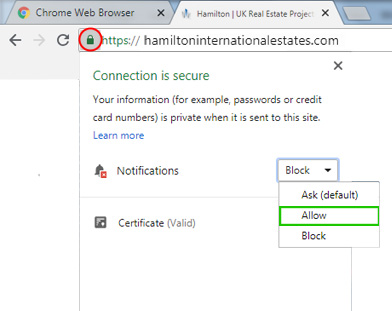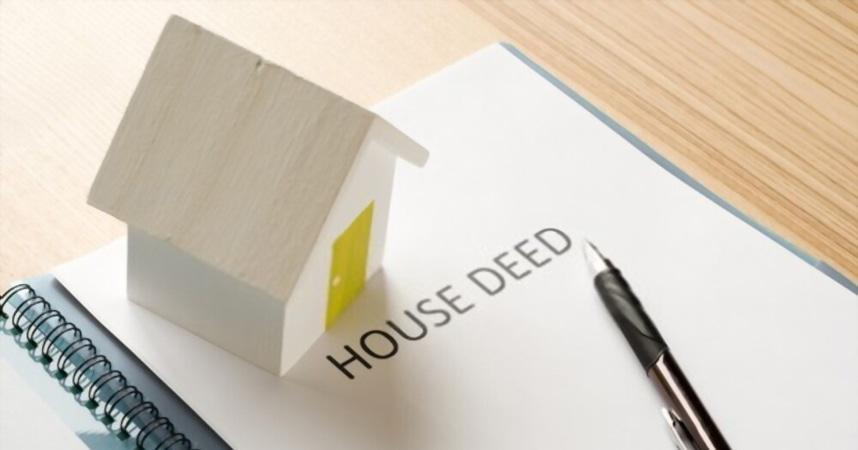How Much Does It Cost To Change The Name On House Deeds?
28 Feb 2021
Introduction:- If a person wants to add or withdraw someone's name from the house deed, they must apply for a property amendment. You can change the names on the title deed without anyone's help, where you need to fill out the application forms and pay any fee. Most commonly, a change of name, particularly the removal of a name, happens after divorce or death.
After registration, you can transfer names on house deeds or property title deeds in the UK to another person's name, and the cost of the name transformation process in a house deed depends on the individual case. Technically, the expenses will not be very high; however, one may pay secondary fees.
You should consult an expert lawyer to know more about the cost involved in such transactions. The conveyancing price for a transfer of names is usually a couple of hundred pounds. By law, a solicitor working for a firm regulated by the SRA or a licensed conveyancer can change the name on your behalf for a small fee.
There is a long list of lawyers who practice real estate laws on the internet, where they may charge their price for getting a new agreement depending on their fee structure.
Regarding property transfers, you must pay stamp duty land tax, but only if the asset's value is over £125,000. When buying a property, if the value of your share is less than £125,000, you do not need to pay the tax.
In most cases, you may have to pay the Land Registry a fee (a minimum of £40) even if you fill out the forms to cover the cost of modifying the register to reflect your joint ownership of the property.
How to Change the Name on House Deeds after Death?
Some cases require a transfer on probate or administration of an estate on death. For example, if someone dies, you need to remove their name from the property deed to complete the probate process and distribute their estate to the beneficiaries, where the deceased name is replaced with the beneficiaries or a new owner (in the case of sale).
It is also required in the case of divorce or separation. For example, suppose a couple files a case of divorce or separation, where one of the partners or both want to live in the property, particularly if it is the family home and there are children. In that case, the person who stays back might buy the share of the other, or one can transfer it under a consent order.
Different ownership relationships require you to follow different steps in the name-changing process. For example, changing the name on a house deed entails a small cost, but the amount varies depending on the property's value.
The will of the deceased mentions the person's name that will have the right to deal with their estate, but in cases where there is no will, the next-of-kin gets the rights to handle the related legal issues.
For example, the named beneficiary in the will gets probate, or if there is no will, the next-of-kin will obtain a letter of administration that allows for the transfer of property ownership into a new name.
Two types of joint ownership exist –joint tenants and tenants in common. If the property deeds have not been registered with the HM Land Registry, a name change to the deed can trigger the need for the first registration. So you may have to make an application for the first property registration and a transfer of ownership.
On the other hand, suppose a property title has not been registered with the Land Registry; the death of one co-owner will not trigger the need for initial registration. In that case, the death certificate can be placed in the registry with the deeds for record-keeping purposes.
-
In the case of joint tenants, if the property is held as joint tenants under the ownership of spouses and if neither spouse owns a specific part of the house when one owner is no more, the surviving automatically inherits the property regardless of the one listed in the will as a beneficiary.
-
For the sole owner, one can complete the process of transforming the name on a deed when a sole owner dies, and the property is transferred to either a beneficiary or a third party.
-
Suppose the surviving spouse wants to remove the deceased spouse's name from the property, then the property is listed in the sole name of the surviving owner. In that case, one must send the official death certificate to the Land Registry.
-
For property that spouses jointly own as tenants in common, a different process is followed to transfer ownership. When the spouse or two unmarried individuals own property as tenants in common, each spouse owns a particular share.
-
As per the Rules of Intestacy, the deceased's property share is dealt with as per their will, but if there is no will when someone dies with no surviving civil partner or spouse or with surviving descendants, the entirety of their estate passes to each of the descendants in equal shares.
-
After the death of one of the property owners, a beneficiary will either get "probate" or a next-of-kin will be able to get the "letters of administration". Beneficiaries or next-of-kin can legally act as personal representatives for the deceased, meaning they have the power and ability to transfer ownership of the property and change the name on the deed if they so choose.
-
But, of course, they also have the power to sell the property. So, removing a deceased person's name from a deed will depend on several factors. However, legally, removing a deceased person's name from a deed will make all future ownership transfers much easier.
How Much Does It Cost To Change A Name On House Deeds in The UK?
You need to pay a small fee to transfer the ownership of a house from one to another, depending on the circumstances in which the property is transferred. Some property transfers involve stamp duty tax, and others require small fees.
For people transferring property worth more than £125K, stamp duty land tax is paid to transfer the property ownership. However, stamp duty land tax is not usually charged for people whose homes are worth less than £125K.
Besides the possibility of a stamp duty tax payment in certain cases, in all situations, there are some fees to be paid to complete the transfer of ownership, including the following:
One must pay a minimum Land Registry fee of £40 regardless of whether or not you fill and submit the forms yourself. The cost may be more than £40 depending on the exact situation.
For people who are into joint ownership of more than one property, the Land Registry fee is £150.
To modify the name on a house deed and add the new owner(s), you need to find a notary to act as a witness and provide a notarization on the new deed document. Depending on the place/region you get the document notarized and with whom it will cost a small amount. After notarization, you may have to pay a small fee to register the deed officially with the Land Register.
Transferring Names on House Deeds
Title deeds show the chain of ownership that includes the conveyances, contracts for sale, wills, mortgages, and leases. The mortgage lender usually keeps the title deeds to a property with a mortgage. So, one can access it after paying the mortgage in full. But you can request copies of the deeds at any time.
Transferring names on house deeds by the estate or property title to another person's name can happen only after registration. For removing or adding a name to house deeds UK, one must fill in the changes in the property form.
There are also many other reasons for transferring property ownership. For example, in the case of a couple not married but living together in a house, it does not matter if they are paying the house mortgage. If one of the partners leaves the house and says they do not need it, the other person will automatically adopt the responsibility of paying the remaining mortgage.
When deciding on separation from a previous partner, the person must pursue property with a convincing lawyer to cover the transfer process. The lawyer will do all the paperwork and verify the details. After doing this, they must apply to the Land Registry to change the deeds.
Transferring is not removing names from house deeds but adding new names to the deeds in the UK. At the time of equity transfer, an individual must pay convincing fees. Also, the person needs to understand the regulations to know if they must pay the stamp duty.
How Long Does It Take To Remove A Name From Title Deeds?
You should have some documents to own a property. The documents help clarify buyers' ownership over the specific property. It is sometimes also known as sale deeds or title deeds. Removing a person's name from the deed in the UK after the person's death or due to any personal situation is essential. An individual can complete the procedure themselves.
You may require lawful assistance to add or remove a name from title deeds UK. Also, a lawyer needs to examine paperwork. You must fill out the application form to change the register to remove someone's name from title deeds. After the process, you can collect the authorized copy of the ownership record from the Land Register website.
The property owners must sign the transfer deed with the individuals to remove the name. Also, the lawyer will fill in the identity certificate of those individuals. You will need a valid identification form with a biometric residence permit or valid passport and a current driving license in the UK.
The person will also need documents such as a UK mortgage or credit card statement, a council rent book, a tax bill, a revolver certificate, and a utility bill.
It may take a few days to complete the documentation procedure. However, the process will be fast if the property is mortgage-free.
Conclusion:-
The process to change the name property deed or change the name on a house deed in the UK depends on whether or not one or more individuals own the property. In either case, changing the name on a deed after death is relatively straightforward. However, depending on the circumstances, one should follow the legal procedure to change the name after death.
You must first see if the property was under sole ownership or held as joint tenant ownership or tenants in common to change the name. Often, if the property is owned jointly by more than one person, the deceased's name is removed from the deed after death to change the name.
Nevertheless, the transfer process is a little complicated when the property is listed under the names of two spouses. The removal of the name of one of the spouses from the deed depends on the type of joint ownership they have on the property. You can consult a real estate counsellor to learn about all the connected processes and fees.
Categorised in: All News












